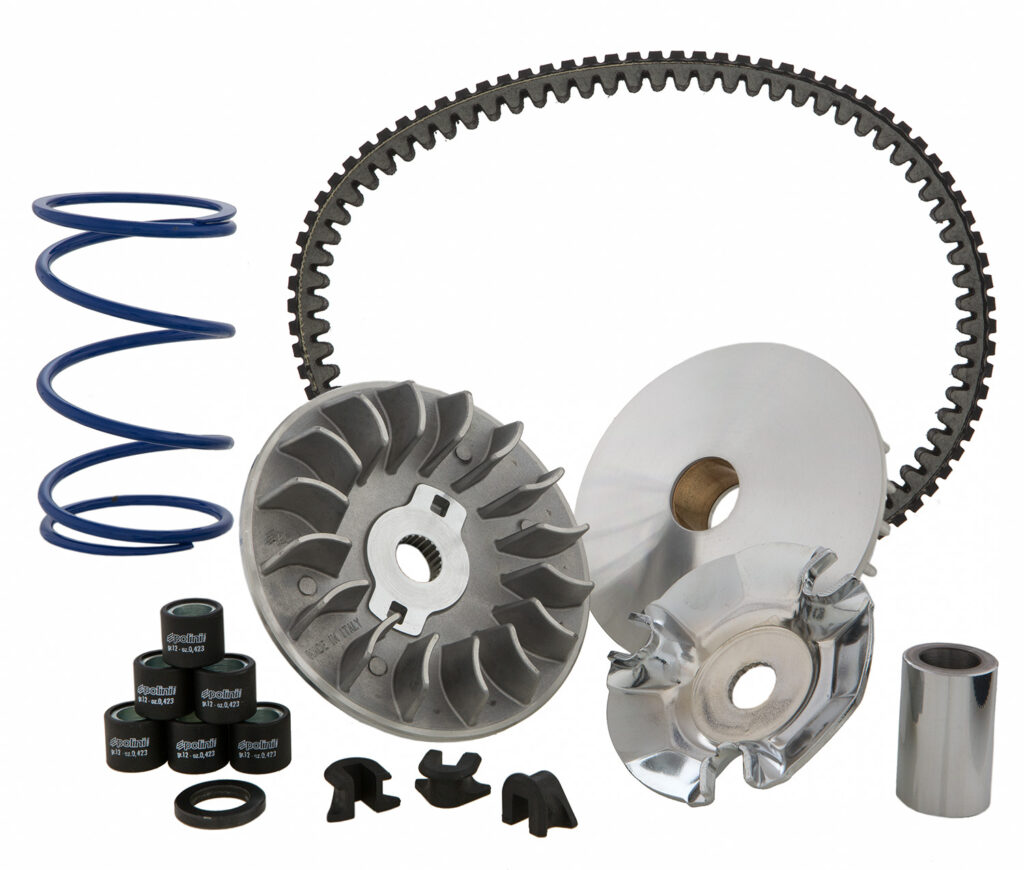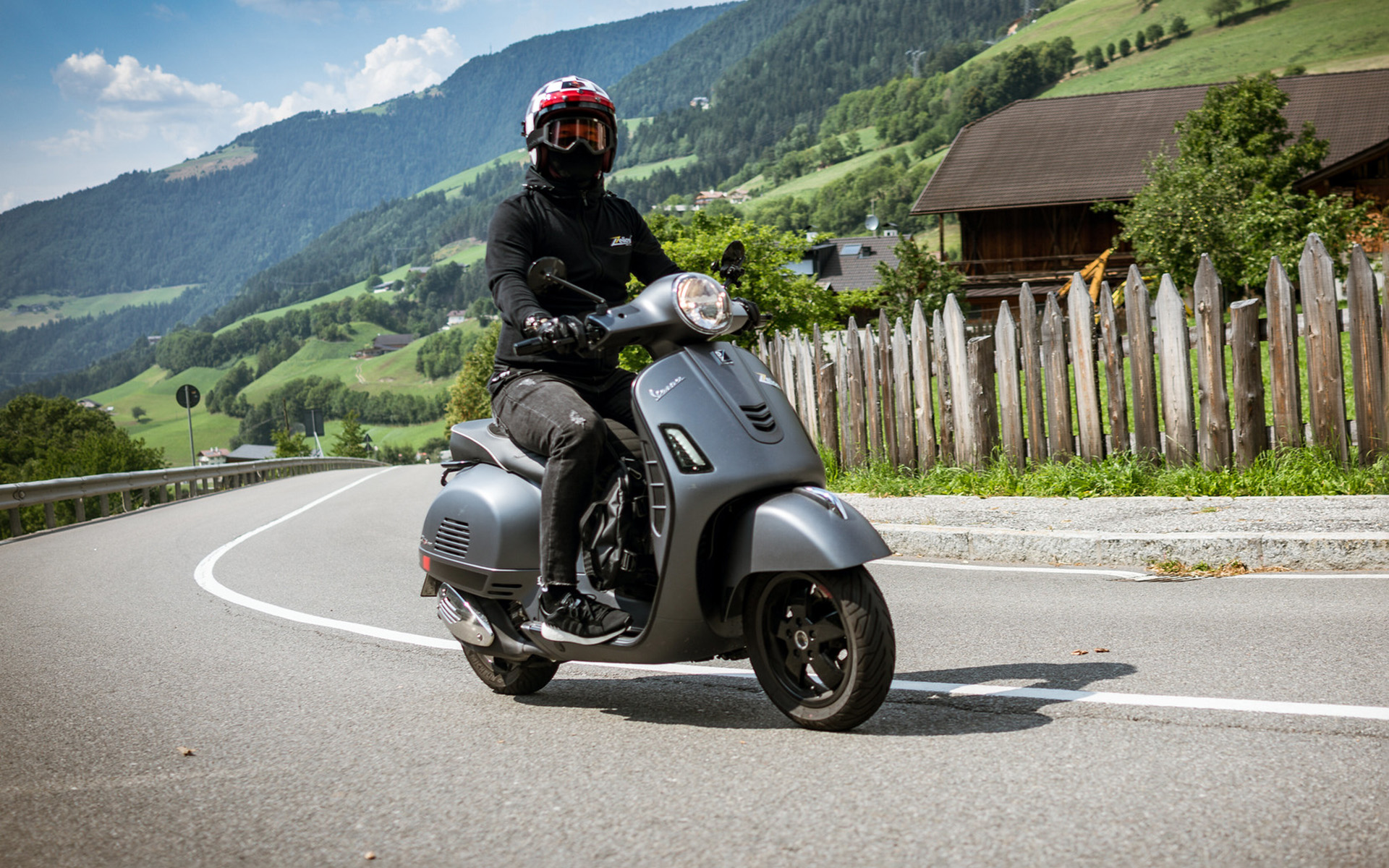A first steep ascent of a mountain or even a pass road with a Vespa that is slowing down and whose revs keep dropping. This scenario has been the cause of many a shifting error in the past, which initially makes it impossible to pass the climb in a relaxed manner, as the momentum and the required speed are quickly lost. While many Vespa riders still appreciate exactly this manual work -and manual work is to be understood in the literal sense-, many rely on modern automatic transmissions, which are installed in all new scooters.
Robust components for sensitive switching operations
As a crucial component of the drivetrain of a Vespa, the transmission enables the efficient transfer of power from the engine to the rear wheel. Development began in 1946 with a three-speed gearbox on the Vespa 98, the very first Vespa to be delivered. In the 1950s, the transmission was further developed by numerous models, which were equipped with a four-speed gearbox. This further gear ratio allowed a better adaptation to driving situations and a more comfortable ride. It was no coincidence that the next decade saw the move to the sporty Sprint models, which were equipped with a five-speed gearbox to offer even greater flexibility and performance.
From manual shifting to automatic transmission
Finally, in the 1970s, the first variomatic transmissions were introduced, which controlled the shifting process automatically and made manual shifting obsolete.
Over the decades, in addition to the design, there was also a continuous development and improvement of transmission types, which led to the continuously variable automatic transmission (CVT).
The continuously variable automatic transmission, or CVT, is a type of transmission that makes it possible to shift smoothly and seamlessly between different ratios without abrupt shifting. The shifting error mentioned at the beginning of this article thus became a thing of the past.
Unlike a conventional transmission, which has a fixed number of gears, the CVT instead uses a system of V-belts and variable pulleys to continuously vary the power transmission. It consists of two conical pulleys connected by what is called a V-belt. The transmission ratio varies depending on how far apart or close the two pulleys are. At high speeds, the pulleys move apart, which also causes the belt to move outward.

The transmission is driven by an oil pump that pumps the transmission oil through the system. Through the use of electronic controls, the CVT transmission can automatically adjust the gear ratio to the speed and load of the vehicle. This provides a continuous and optimal gear ratio that allows for comfortable driving.
Maintenance and care more important than ever
While manual transmissions were very robust and durable even without major maintenance, regular maintenance is important for variomatic transmissions to ensure smooth operation and prevent damage to transmission components. This includes, for example, checking the oil level, replacing worn or damaged parts, and replacing the V-belt on a regular basis. Since there are a variety of different replacement parts here, it is advisable to find out exactly what you need before buying a new V-belt. In SIP Scootershop there are under spare parts for scooters numerous V-belts with detailed product descriptions that each and everyone gets exactly the right parts.
Advantages and disadvantages of the CVT
One of the biggest advantages of the CVT is the higher fuel efficiency, because the CVT always keeps the engine in an optimal speed range. Therefore, the fuel consumption of modern Vespas is far lower than that of the older, manually shifted models. In addition, it also provides a smoother ride and better acceleration since there are no interruptions when changing gears.
Due to the simple and effective way to maximize the power of the engine while ensuring a smooth and comfortable ride, currently all new models are equipped with this system.
However, disadvantages in the form of limited maximum power and higher maintenance complexity clearly outweigh the vastly superior advantages.
All in all, as is so often the case, it is evident that the style icon Vespa has reinvented itself time and again, not only in terms of design, but also in terms of transmission. So it is no coincidence that manual scooters are still on the road today, just like the modern automatic scooters. Even if in the case of a shifting error certainly the one or other mocking grin will be present, so unites all together the joy to be on a Vespa on the road. Regardless of whether it’s manually shifted or automatic.



